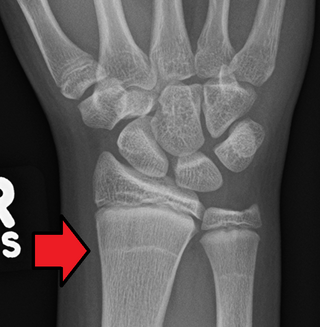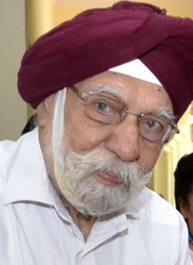Related Research Articles

Bonnie Lynn Bassler is an American molecular biologist; the Squibb Professor in Molecular Biology and chair of the Department of Molecular Biology at Princeton University; and a Howard Hughes Medical Institute Investigator. She has researched cell-to-cell chemical communication in bacteria and discovered key insights into the mechanism by which bacteria communicate, known as quorum sensing. She has contributed to the idea that disruption of chemical signaling can be used as an antimicrobial therapy.
Peter William Hochachka, was a Canadian professor and zoologist at the University of British Columbia (UBC). He is known for his foundational work in creating the new field of adaptational biochemistry, connecting metabolic biochemistry with comparative physiology.
Haplogroup K or K-M9 is a genetic lineage within human Y-chromosome DNA haplogroup. A sublineage of haplogroup IJK, K-M9, and its descendant clades represent a geographically widespread and diverse haplogroup. The lineages have long been found among males on every continent except Antarctica.
Annals of Neurology is a peer-reviewed medical journal publishing articles of "broad interest in neurology, particularly those with high impact in understanding the mechanisms and treatment of diseases of the human nervous system." The journal has a 2020 Journal Citation Reports impact factor of 10.422, ranking it 9th out of 208 journals in the category "Clinical Neurology".

The American Journal of Human Biology is a peer-reviewed scientific journal covering human biology. It is the official publication of the Human Biology Association. The journal publishes original research, theoretical articles, reviews, and other communications connected to all aspects of human biology, health and disease.

Growth arrest lines, also known as Harris lines, are lines of increased bone density that represent the position of the growth plate at the time of insult to the organism and formed on long bones due to growth arrest. They are only visible by radiograph or in cross-section. The age at which the lines were formed can be estimated from a radiograph. Harris lines are often discussed as a result of juvenile malnutrition, disease or trauma. Other studies suggest a reconsideration of Harris lines as more of a result of normal growth and growth spurts, rather than a pure outcome of nutritional or pathologic stress. The lines are named after Henry Albert Harris (1886–1968), professor of anatomy at the University of Cambridge.

Paul Thornell Baker was Evan Pugh Professor Emeritus of Anthropology at the Pennsylvania State University, and was “one of the most influential biological anthropologists of his generation, contributing substantially to the transformation of the field from a largely descriptive to a hypothesis-driven science in the latter half of the 20th century. He pioneered multidisciplinary field science, firmly established a place for biological anthropology and human population biology in national and international science, and trained a host of graduate students in good science, who, in turn, continued his commitment to collaborative research.”
Haplogroup Q-L54 is a subclade of Y-DNA haplogroup Q-L53. Q1a3a-L54 is defined by the presence of the L54 Single Nucleotide Polymorphism (SNP).

Debora Diniz Rodrigues, is an anthropologist and law professor at the University of Brasilia, and a co-founder and researcher at Anis: Institute for Bioethics. She is also a researcher, writer and documentary filmmaker. Her research projects focus on bioethics, feminism, human rights and health. She was a visiting researcher at the University of Leeds, the University of Michigan, the University of Toronto, among other institutions.

The Myth of Race: The Troubling Persistence of an Unscientific Idea is a book by anthropologist Robert Wald Sussman arguing that race is not, and never had been, a valid biological category in humans. It was published in 2014 by Harvard University Press.
Gabriel Ward Lasker was a British-born American biological anthropologist. He taught anatomy at Wayne State University School of Medicine for 36 years and served as editor-in-chief of the scientific journal Human Biology for 35 years. He was a Fulbright Scholar in Peru in 1957–58. He served as president of the American Association of Physical Anthropologists from 1963 to 1965 and received their Charles R. Darwin Lifetime Achievement Award in 1993. In 1974, he founded the Human Biology Council as a society that supported the publication of Human Biology.
B. Holly Smith is an American biological anthropologist. She is currently a research professor in the Center for Advanced Study of Human Paleobiology at The George Washington University. She is also a visiting research professor at the University of Michigan Museum of Anthropological Archaeology. The majority of her work is concentrated in evolutionary biology, paleoanthropology, life history, and dental anthropology.
Mary Lewis is Professor of Bioarchaeology at the University of Reading. After completing a PhD in bioarchaeology at the University of Bradford in 1999, Lewis went on to lecture at Bournemouth University (2000–2004) before moving to the University of Reading in 2004. She conducted the first osteological study of a body which has been hanged, drawn, and quartered. Lewis has held editorial roles with the International Journal of Osteoarchaeology, International Journal of Paleopathology, and the American Journal of Biological Anthropology.

Indera Paul Singh was an Indian anthropologist who had served at prominent positions in several Indian and international anthropological organizations.
Edward Eyre Hunt Jr. was an American physical anthropologist and human biologist. He did bachelor's, master's and a Ph.D. from the Harvard University in 1942, 1949 and 1951, respectively. He worked at several academic institutions including the Harvard University, City University of New York, Yale University and Pennsylvania State University until his retirement in 1985.
Tony Waldron was a British physician and bioarchaeologist specialising in occupational medicine, palaeopathology, and palaeoepidemiology. He was an honorary professor at the UCL Institute of Archaeology, a lecturer in occupational medicine at the London School of Hygiene & Tropical Medicine, and a consultant physician at University College Hospital and St Mary's Hospital. He wrote a number of books on bioarchaeology, including the widely used textbooks Palaeoepidemiology (2007) and Palaeopathology (2009).
Gerard David Schellenberg is an academic neuropathologist who specializes in the research of Alzheimer's disease. He is the director of Penn Neurodegeneration Genomics Center as well as a professor of Pathology and Laboratory Medicine at the University of Pennsylvania. He is a leading contributor to Alzheimer's disease research.
Thelma Shoher Baker was an American educator and anthropologist. She on the faculty of the Pennsylvania State University from the 1970s until her retirement in 1986.
Lisa Sattenspiel is an anthropologist at the University of Missouri known for her work on infectious diseases, their spread and ecology. She is an elected fellow of the American Association for the Advancement of Science.
References
- 1 2 Anon. (1989). "Bylaws of the Human Biology Council". American Journal of Human Biology. 1 (1): 5–9. doi:10.1002/ajhb.1310010104. ISSN 1042-0533. PMID 28514031. S2CID 12069026.
- ↑ "Society Information: The Human Biology Association (HBA)". Wiley. John Wiley & Sons, Inc. Retrieved 15 July 2022.
- 1 2 Anon. (1995). "The human biology association". American Journal of Human Biology. 7 (6): 797–802. doi: 10.1002/ajhb.1310070619 . ISSN 1520-6300. PMID 28557160. S2CID 205301364.
- ↑ "About (American Journal of Human Biology)". Wiley. John Wiley & Sons, Inc. Retrieved 15 July 2022.
- 1 2 3 4 Little, Michael A.; James, Gary D. (2005). "A brief history of the Human Biology Association: 1974-2004" (PDF). American Journal of Human Biology. 17 (2): 141–154. doi:10.1002/ajhb.20110. ISSN 1042-0533. PMID 15736178. S2CID 6298794.
- ↑ Little, Michael A.; Garruto, Ralph M. (2010). "Raymond Pearl and the Shaping of Human Biology". Human Biology. 82 (1): 77–102. doi:10.3378/027.082.0105. ISSN 0018-7143. PMID 20504172. S2CID 20710109.
- ↑ Cameron, Noël (2008). "50 years of the Society for the study of Human Biology". Annals of Human Biology. 35 (5): 457–461. doi: 10.1080/03014460802069587 . ISSN 1464-5033. PMID 18821323. S2CID 205545043.
- ↑ Tanner, J. M. (1999). "The growth and development of the Annals of Human Biology: a 25-year retrospective". Annals of Human Biology. 26 (1): 3–18. doi:10.1080/030144699282949. ISSN 0301-4460. PMID 9974080.
- ↑ Little, Michael A.; James, Gary D.; Garruto, Ralph M. (2012). "Human Biology Association archives at the Smithsonian Institution National Anthropological Archives". American Journal of Human Biology. 24 (2): 253–256. doi:10.1002/ajhb.22242. ISSN 1520-6300. PMID 22302499. S2CID 30993620.
- ↑ Little, Michael A.; James, Gary D. (2018), "Human Biology Association", in Trevathan, Wenda; Cartmill, Matt; Dufour, Dana; Larsen, Clark (eds.), The International Encyclopedia of Biological Anthropology, Hoboken, NJ, USA: John Wiley & Sons, Inc., p. 1, doi:10.1002/9781118584538.ieba0527, ISBN 978-1-118-58442-2, S2CID 240109585 , retrieved 2022-07-15
- ↑ Kingsland, Sharon (1984). "Raymond Pearl: On the Frontier in the 1920's: Raymond Pearl Memorial Lecture, 1983". Human Biology. 56 (1): 1–18. ISSN 0018-7143. JSTOR 41463546. PMID 6378756.
- ↑ humbio-admin. "Boas Award | Human Biology Association" . Retrieved 2022-07-15.
- ↑ humbio-admin. "Michael A. Little Award | Human Biology Association" . Retrieved 2022-07-15.
- 1 2 humbio-admin. "HBA Awards | Human Biology Association" . Retrieved 2022-07-15.
- ↑ Holdsworth, Elizabeth. "Book Award | Human Biology Association" . Retrieved 2022-07-15.